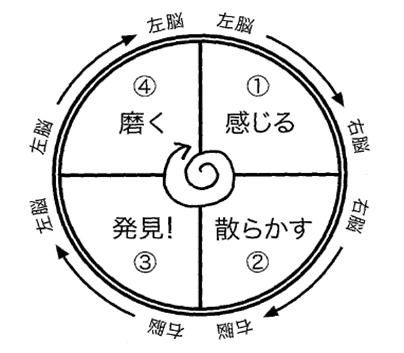Tetsumachi in Yokohama City, where I spent my elementary through high school years, is the setting for Sato Haruo's "The Melancholy of the Countryside." In junior high, learning this fact led me to discover "The Song of the Pacific Saury."
Sanma, sanma
Dripping the tartness of blue mandarins over it
Eating sanma is that man's hometown custom.
(Excerpt)
Sanma, sanma
Is the saury bitter or salty?
Dripping hot tears upon it
Where in the world is this custom of eating saury?
(Excerpt from "Song of the Pacific Saury" by Haruo Sato)
Yet this poem, expressing feelings for Tanizaki Jun'ichirō's wife... Well, well, I couldn't understand it at all back then.
Setting aside the mental landscape depicted here, grated daikon radish is indispensable for fatty sanma. And the "green citrus" (something like sudachi) that was a custom in Sato Haruo's hometown of Wakayama is now common knowledge nationwide. It's a truly perfect combination. Add some hot sake to this, and it's absolutely perfect!
Incidentally, as advertising giant J.W. Young discerned a quarter-century ago, even ideas that seem groundbreaking are ultimately nothing more than "a new combination of existing elements."
Wagashi artisan × avant-garde artist, athlete's wisdom × factory production management, undersea × agriculture
Such bold combinations are always brimming with the potential to generate "ideas." However, simply creating an eccentric combination doesn't make it an "idea." That's because it hasn't yet become a "new perspective for solving problems."
In terms of "Circular Thinking," which organizes the idea-creation process into four modes, trial and error with these countless new combinations is the "Scatter" stage. What exists here is still merely a "flicker of inspiration."
Then, after much trial and error, exhaustively considering every possibility, a perspective is finally attained. "This can solve the problem!" – that "discovery!" is the idea.
I wholeheartedly support the movement of advertising agencies applying their accumulated know-how to non-advertising fields, creating unprecedented business opportunities. However, if it merely creates new meeting places and is called "idea production," I personally feel compelled to raise a question mark.
The Osaka dialect term "icchokami" probably captures a trait common among advertising professionals. It means "a person who can't rest until they've tried their hand at everything," which aligns with J.W. Young's observation that creative people tend to be fascinated by everything from Egyptian burial customs to modern art, voraciously devouring all kinds of knowledge.
At the same time, "icchokami" also carries the meaning of "someone who sticks their neck in a little, then quickly gets bored." If you only set up the meeting place and then get bored if it doesn't go well, I don't think you can really say you're participating in "idea creation."
Herein lies the difficulty of idea creation outside the advertising realm. It demands more than just sticking your neck out; it requires active participation. How do you persistently engage in unfamiliar fields beyond advertising, without specialized knowledge? I believe a non-"just sticking my neck out" attitude is essential. What do you think?
Please, help yourself!









